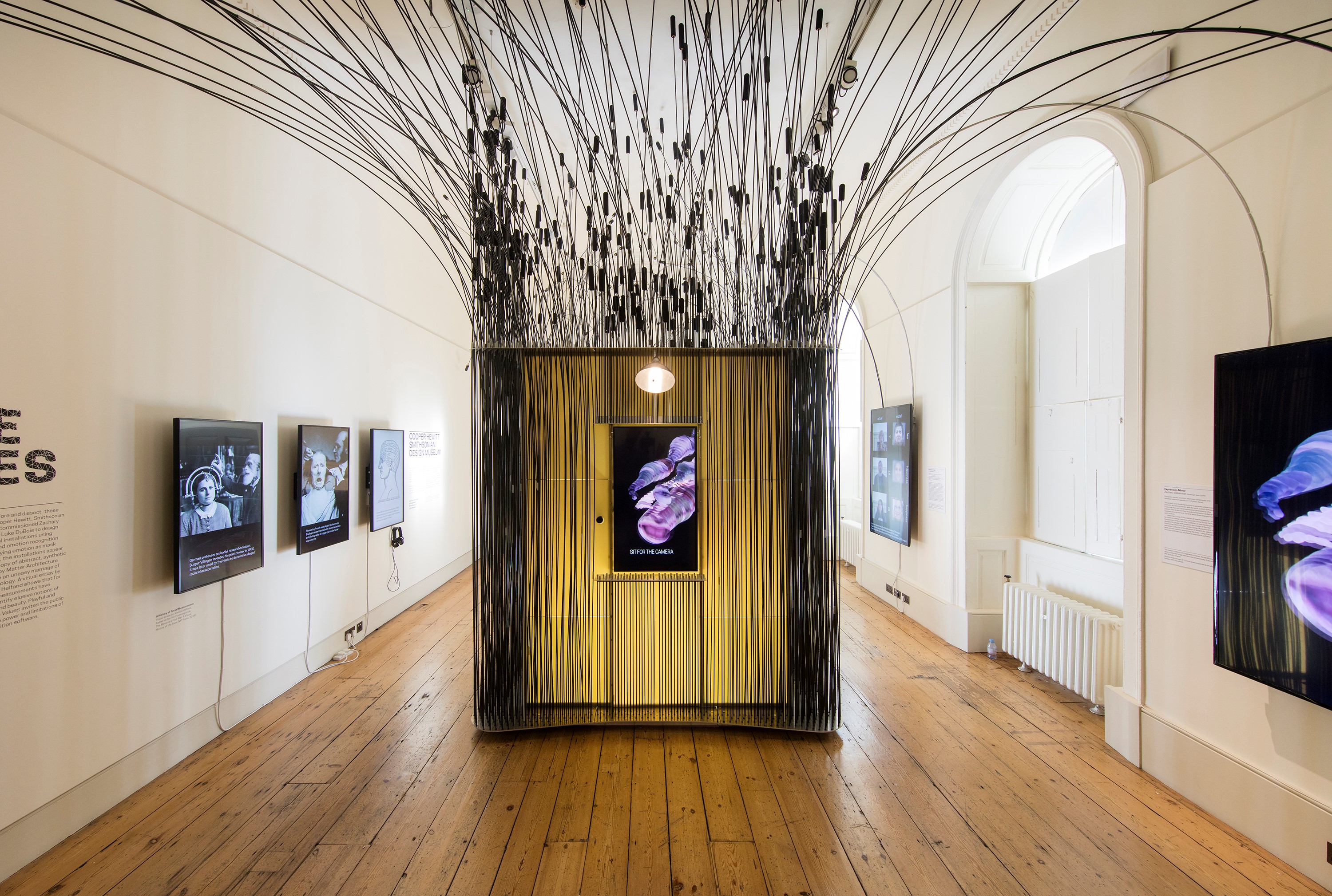Cooper Hewitt To Bring Its Award-Winning "Face Values" Installation to New York
“Face Values: Exploring Artificial Intelligence” at Cooper Hewitt, Smithsonian Design Museum, explores the possibilities and limits of artificial intelligence through interactive works featuring technologies such as face detection, emotion recognition and eye-tracking. On view in the museum’s Process Lab Sept. 20 through May 17, 2020, the immersive installation features commissioned work by R. Luke DuBois, Zachary Lieberman and Karen Palmer, and is accompanied by a visual essay on facial measurement by Jessica Helfand.
First unveiled at the 2018 London Design Biennale, where it received a medal for the most inspiring interpretation of the Biennale’s Emotional States theme, “Face Values” investigates how the human face has been transformed into a living data source that governments and businesses use to track, measure and monetize emotions. The 2019 installation at Cooper Hewitt includes a newly commissioned work by Palmer.
“‘Face Values’ invites audiences to consider critical issues around the pervasive but often hidden role of facial recognition technology in today’s society, where personal photos and videos are often collected by governments and corporations and used to monitor identity and classify emotions, sometimes without permission or oversight,” said Caroline Baumann, director of Cooper Hewitt. “This powerful, interactive experience enables participants to see firsthand the limits and flaws of A.I. and the massive challenges surrounding this growing field.”
“Face Values” speaks to the rising fascination around facial detection technology, particularly in the U.S., where major companies continue to experiment and push boundaries with this controversial software. Playful and provocative interactions with the work allow viewers to gain further awareness of tools that are incorporated into countless products and systems, in ways that the public may not fully realize. The works on view in “Face Values” include:
- Expression Mirror by Lieberman creates a unique portrait by mixing the viewer’s face with expressions generated by other visitors. Dynamic white lines create an abstract, graphic interpretation of emotional states to demonstrate how machine-learning technologies evaluate people’s behaviors.
- Expression Portrait by DuBois instructs the viewer to enact a series of different emotions toward the screen—such as sadness, anger or disgust. The camera records the viewer’s expression and employs software tools to judge their age, sex, gender and emotional state.
- Perception IO (input output) by Palmer reveals how a person’s gaze and emotions influence their perception of reality. The system tracks the participant’s eye movements and facial expressions while they watch a video and shows the results of where they looked and how they responded in order to illuminate implicit human bias.
- A History of Facial Measurement, a visual essay by designer and historian Helfand, explains how scientists, criminologists and beauty experts have tried to quantify the human face.
- A garden of synthetic three-dimensional reeds designed by Matter Architecture Practice serves as the backdrop for the installation, evoking a strange marriage of nature and technology.
“Across history, artists, designers and scientists have sought to codify facial features and emotional states,” said Ellen Lupton, senior curator of contemporary design at Cooper Hewitt. “It is only in our present time, however, that the products that we use can now read our emotions and judge who we are. In bringing together these works of design, architecture and scholarship, ‘Face Values’ allows us to view today’s technologies in relation to a broader cultural and scientific history, as well as expand our understanding of how technology and design are forever changing both our digital and physical lives.”
Process Lab is made possible by major support from Alice Gottesman.
Related Programming
On Sept. 16, the Interaction Lab at Cooper Hewitt and Museums + AI Network will co-host Curator, Computer, Creator: A Discussion on Museums and AI in the 21st Century. The program will explore different perspectives on AI applications in the museum sector.
Other planned events include a panel discussion with DuBois, Lieberman and Helfand on Oct. 3, and a conversation with Palmer on Oct. 29. Visit cooperhewitt.org/events for registration details.
About Cooper Hewitt, Smithsonian Design Museum
Cooper Hewitt is America’s design museum. Inclusive, innovative and experimental, the museum’s dynamic exhibitions, education programs, master’s program, publications and online resources inspire, educate and empower people through design. An integral part of the Smithsonian Institution—the world’s largest museum and research complex—Cooper Hewitt is located on New York City’s Museum Mile in the historic, landmark Carnegie Mansion. Steward of one of the world’s most diverse and comprehensive design collections—over 210,000 objects that range from an ancient Egyptian faience cup dating to about 1100 BC to contemporary 3-D-printed objects and digital code—Cooper Hewitt welcomes everyone to discover the importance of design and its power to change the world. Cooper Hewitt knits digital into experiences to enhance ideas, extend reach beyond museum walls and enable greater access, personalization, experimentation and connection. The museum is fully accessible.
For more information, visit https://www.cooperhewitt.org/ or follow @cooperhewitt on Instagram, Facebook, Twitter and YouTube.
# # #
SI-350-2019

